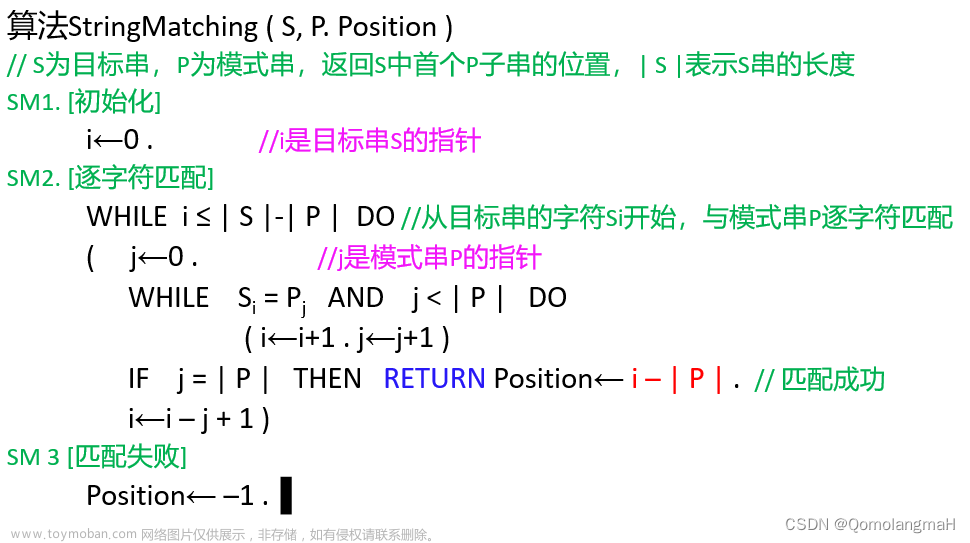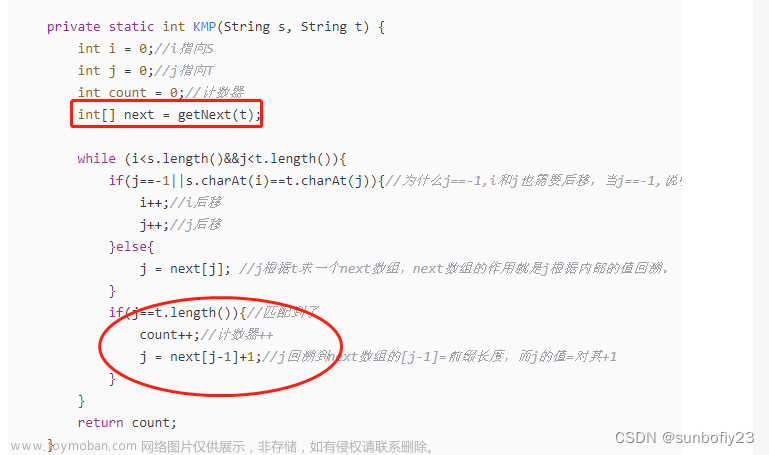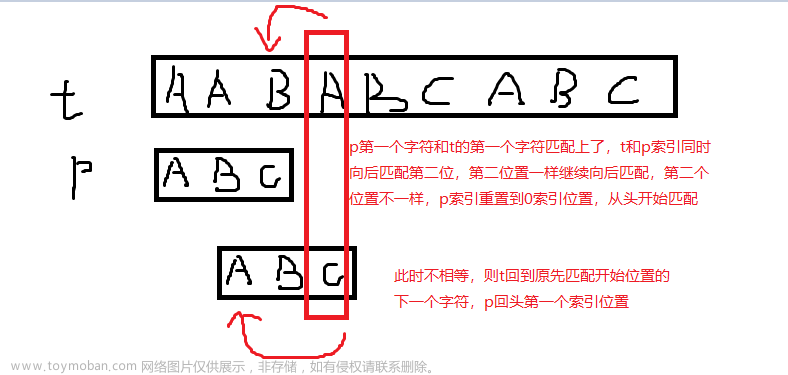一、thefuzz
thefuzz包以前叫fuzzywuzzy,0.19版本开始改名为thefuzz,github地址:
GitHub - seatgeek/thefuzz: Fuzzy String Matching in Python
可以通过命令pip install thefuzz安装此包。用法还是比较简单的:
from thefuzz import fuzz
fuzz.ratio("test", "test!")
>>89上面两个字符串的相似度为89%。
二、相似度ratio的计算
我们先看看这个包下面的源码,来查看thefuzz是怎么实现模糊匹配的。thefuzz源码包的结构如下:

先看看ratio方法源码:
def ratio(s1, s2):
s1, s2 = utils.make_type_consistent(s1, s2)
m = SequenceMatcher(None, s1, s2)
return utils.intr(100 * m.ratio())
可以看到,ratio方法用到了一个比较关键的类SequenceMatcher,但是这个类却有可能来自两个不同的地方。
2.1 SequenceMatcher的来源
看看fuzzy.py的头部代码:
import platform
import warnings
try:
#从当前文件夹的StringMatcher中导入StringMatcher
from .StringMatcher import StringMatcher as SequenceMatcher
except ImportError:
if platform.python_implementation() != "PyPy":
warnings.warn('Using slow pure-python SequenceMatcher. Install python-Levenshtein to remove this warning')
from difflib import SequenceMatcher
#导入当前文件夹的utils包,.代表当前目录
from . import utils上面代码涉及了一个导入问题,即先从当前文件StringMatcher中导入StringMatcher,如果导入出现异常,就去difflib中导入SequenceMatcher。
正如上面第一张图中看到的,当然文件夹下面确实有一个叫StringMatcher.py的文件,也看看它前面的代码:
from Levenshtein import *
from warnings import warn
class StringMatcher:
.............
.............可以看出,这个StringMatcher类引用了Levenshtein包,这个包也是用来计算字符串模糊匹配的,效率上来说,有可能比difflib中的SequenceMatcher快4-10倍。
Levenshtein包是用C语言写的,比较复杂,最初的项目地址:
GitHub - miohtama/python-Levenshtein: The Levenshtein Python C extension module contains functions for fast computation of Levenshtein distance and string similarity
后来这个作者没有维护了,然后由另一个在维护,项目的地址在这里:
GitHub - ztane/python-Levenshtein: The Levenshtein Python C extension module contains functions for fast computation of Levenshtein distance and string similarity
但是,这个页面上,作者也说了,他也7年不维护了,现在没找到新的维护者。
不管怎么说,如果要使用Levenshtein,还是可以安装的:
pip install python-Levenshtein
总结就是,thefuzz有两种实现方式,一种是依赖difflib,另一种依靠 python-Levenshtein。先看简单的difflib。
2.2 difflib包中的SequenceMatcher
首先导入:
from difflib import SequenceMatcher这个类的主要作用是计算两个匹配字符串的相似度,如下:
s = SequenceMatcher(None, "abcde", "bcde")
s.ratio()输出值为0.888888。这个是怎么计算的呢?可以查看difflib.py的源代码(我的电脑在D:\ProgramData\Miniconda3\Lib目录下),如下:
def ratio(self):
matches = sum(triple[-1] for triple in self.get_matching_blocks())
return _calculate_ratio(matches, len(self.a) + len(self.b))这个方法涉及到两个比较重要的方法,一个是get_matching_blocks(),这个方法用于获取匹配的字符块。另一个方法_calculate_ratio,用于计算相似度,先看_calculate_ratio,代码如下:
def _calculate_ratio(matches, length):
if length:
return 2.0 * matches / length
return 1.0上面代码的第三行是关键,matches表示的字符个数,length是两个字符串加起来的总长度。如上面的"abcde"和 "bcde",ratio的计算方法就是2*4/9,即8/9=0.888888。
再看看get_matching_blocks方法。这个方法比较复杂,我们先来看下,这个方法的用法:
s = SequenceMatcher(None, "abchde", "bcde")
print(s.get_matching_blocks())输出如下:
[Match(a=1, b=0, size=2), Match(a=4, b=2, size=2), Match(a=6, b=4, size=0)]
什么意思?从方法的名字大概就能看出来,就是获得匹配的所有字符块。上面的代码输出了3个Match对象,Match(a=1, b=0, size=2)的意思是"abchde"从索引1(a=1)开始,"bcde"从索引0(b=0)开始,匹配到2(size=2)个相等字符,即“bc”。
最后一个Match(a=6, b=4, size=0)是固定的,a、b代表两个字符串的长度,size=0固定不变。用代码描述如下:
(len(a), len(b), 0)
但是如果前面字串符已经匹配过,就不会再进行匹配了,如下:
s = SequenceMatcher(None, "bc", "abchdebc")
print(s.get_matching_blocks()) 输出:
[Match(a=0, b=1, size=2), Match(a=2, b=8, size=0)]
即“bc”只匹配了第一次的位置,后面就算出现和它一样的字符串,也不再进行匹配。
三、process模块
从第一张图中可以看到,除了fuzz.py这个文件,还有一个叫process.py的文件,process模块常用的是从候选列表中,返回与目标字符串最相似的一个结果。来看一个简单的例子:
from thefuzz import fuzz,process
choices = ["hello world", "hello china", "hello beijing"]
print(process.extractOne("china",choices))
#输出内容
>>('hello china', 90)正如上面代码所示,process最常用的用法是从众多字符串中,找到最佳匹配的字符串。
process.extractOne的格式如下:
extractOne(query, choices, processor=default_processor, scorer=default_scorer, score_cutoff=0):
"""
Args:
query: A string to match against
choices: A list or dictionary of choices, suitable for use with extract().
processor: Optional function for transforming choices before matching.
scorer: Scoring function for extract().
score_cutoff: Optional argument for score threshold. If the best
match is found, but it is not greater than this number, then
return None anyway ("not a good enough match"). Defaults to 0.
Returns:
A tuple containing a single match and its score, if a match
was found that was above score_cutoff. Otherwise, returns None.
"""query:查询的字符串;
choices: 待匹配的字符串列表或者字典;
processor:可选参数,转换器,在匹配前先对choices进行转换处理;
scorer:可选参数,分数器,用于计算分数;
score_cutoff:可选参数,这个参数的作用是设置一个分数门槛(默认为0),如果小于这个分数,就不返回匹配的字符串,而是返回一个None。
extractOne返回的结果是一个tuple元组(最佳匹配结果,分数)。
我们比较关心的一个问题是,这个分数是怎么计算的?看看下面例子:
from thefuzz import fuzz,process
print(fuzz.ratio("china","hello china"))
choices = ["hello world", "hello china", "hello beijing"]
print(process.extractOne("china",choices))
#输出内容
>>62
>>('hello china', 90)可以看出,fuzz.ratio与process.extractOne分数的计算方式不一样(一个是62分,一个90分)。fuzz.ratio的计分方式,上面已经讲了,下面来看看extractOne的计分方式。
extractOne的源码如下:
def extractOne(query, choices, processor=default_processor, scorer=default_scorer, score_cutoff=0):
best_list = extractWithoutOrder(query, choices, processor, scorer, score_cutoff)
try:
return max(best_list, key=lambda i: i[1])
except ValueError:
return None我们刚才说了,第三个参数scorer是用于计分的,它的默认值为default_scorer,那我们先找到这个default_scorer的值:
default_scorer = fuzz.WRatio即默认的计分方式为fuzz.WRatio,那么我们回到fuzz.py中,看看WRatio是做什么的?
from thefuzz import fuzz
default_scorer = fuzz.WRatio
default_scorer("china", "hello china")
#输出
>> 90可以看出,WRatio的计分方式确实和上面的extractOne相同,都是90分。WRatio的计分方式比较复杂,涉及到一个权重(weight)的概念,它是基于fuzz.ratio()的基础上,做了进一步的校正。
如果我们不想采用WRatio的计分方式,或者想采用fuzz.ratio()的计分方式来提取最佳匹配结果,可以这样:
from thefuzz import fuzz,process
print(fuzz.ratio("china","hello china"))
choices = ["hello world", "hello china", "hello beijing"]
print(process.extractOne("china",choices,scorer=fuzz.QRatio))
#输出
>>62
>>('hello china', 62)上面代码的计分结果都是62分,因为fuzz.QRatio的内部,除了对参数进行了一些简单的处理以外,直接调用fuzz.ratio()方法返回了结果。所以fuzz.QRatio和fuzz.ratio()的计分方式完全相同。
fuzz.QRatio源代码:文章来源:https://www.toymoban.com/news/detail-422692.html
# q is for quick
def QRatio(s1, s2, force_ascii=True, full_process=True):
if full_process:
p1 = utils.full_process(s1, force_ascii=force_ascii)
p2 = utils.full_process(s2, force_ascii=force_ascii)
else:
p1 = s1
p2 = s2
if not utils.validate_string(p1):
return 0
if not utils.validate_string(p2):
return 0
return ratio(p1, p2)通过上面的例子可以看出,如果我们对QRatio、WRatio这些计分方式不满意的话,完全可以自己实现了一个Ratio,将它做为extractOne的参数,实现定制的返回结果。文章来源地址https://www.toymoban.com/news/detail-422692.html
到了这里,关于python字符串模糊匹配,并计算匹配分数的文章就介绍完了。如果您还想了解更多内容,请在右上角搜索TOY模板网以前的文章或继续浏览下面的相关文章,希望大家以后多多支持TOY模板网!










